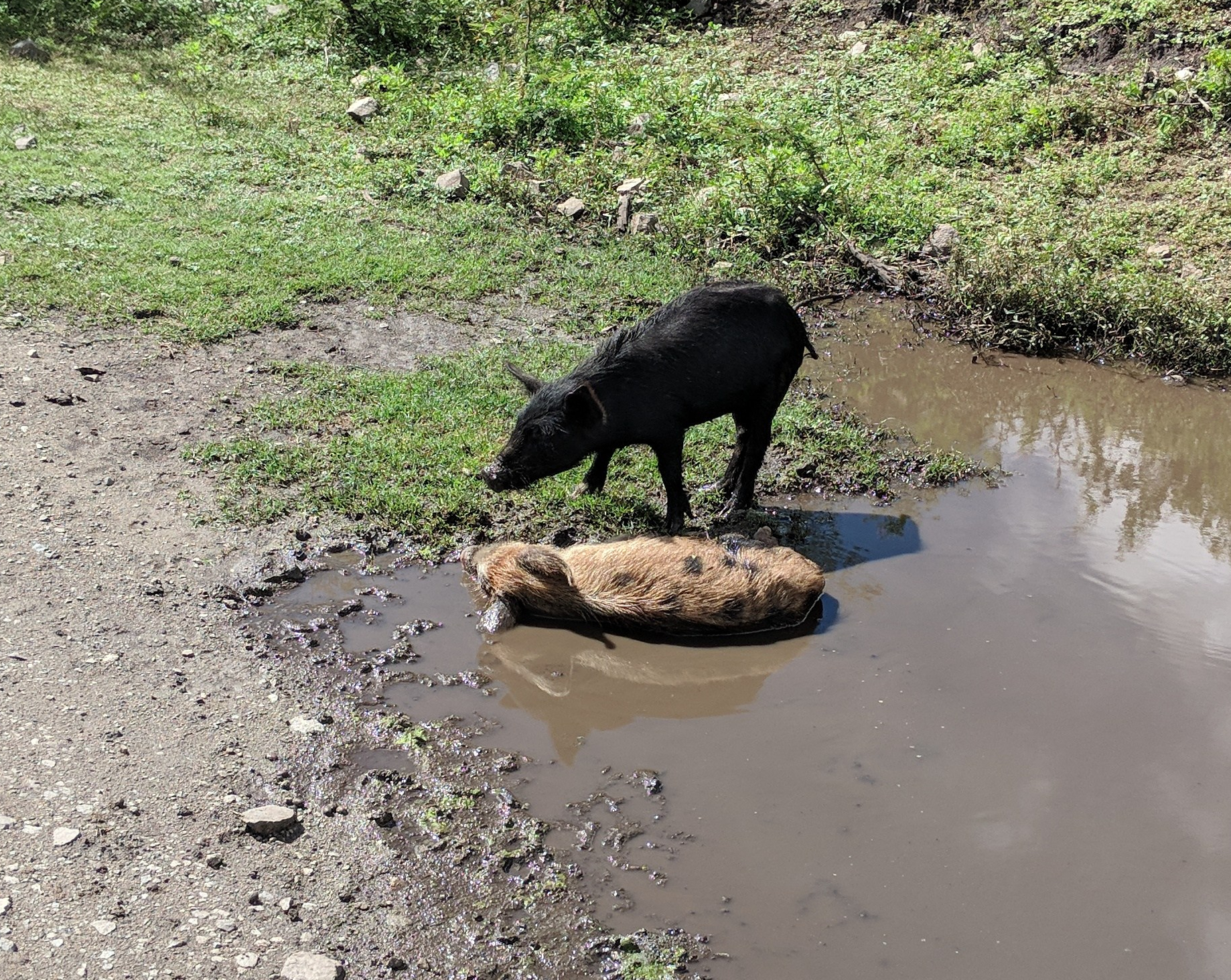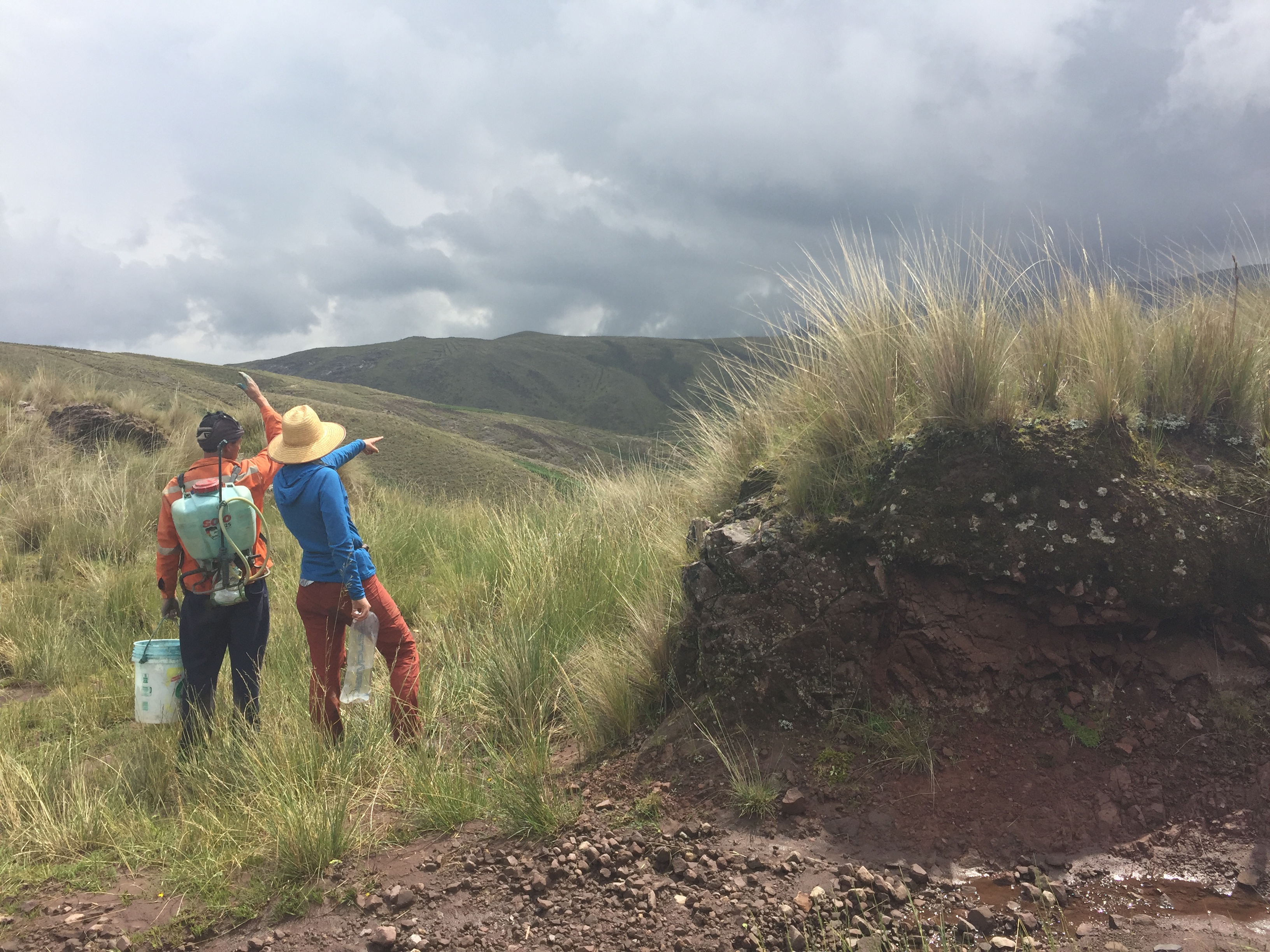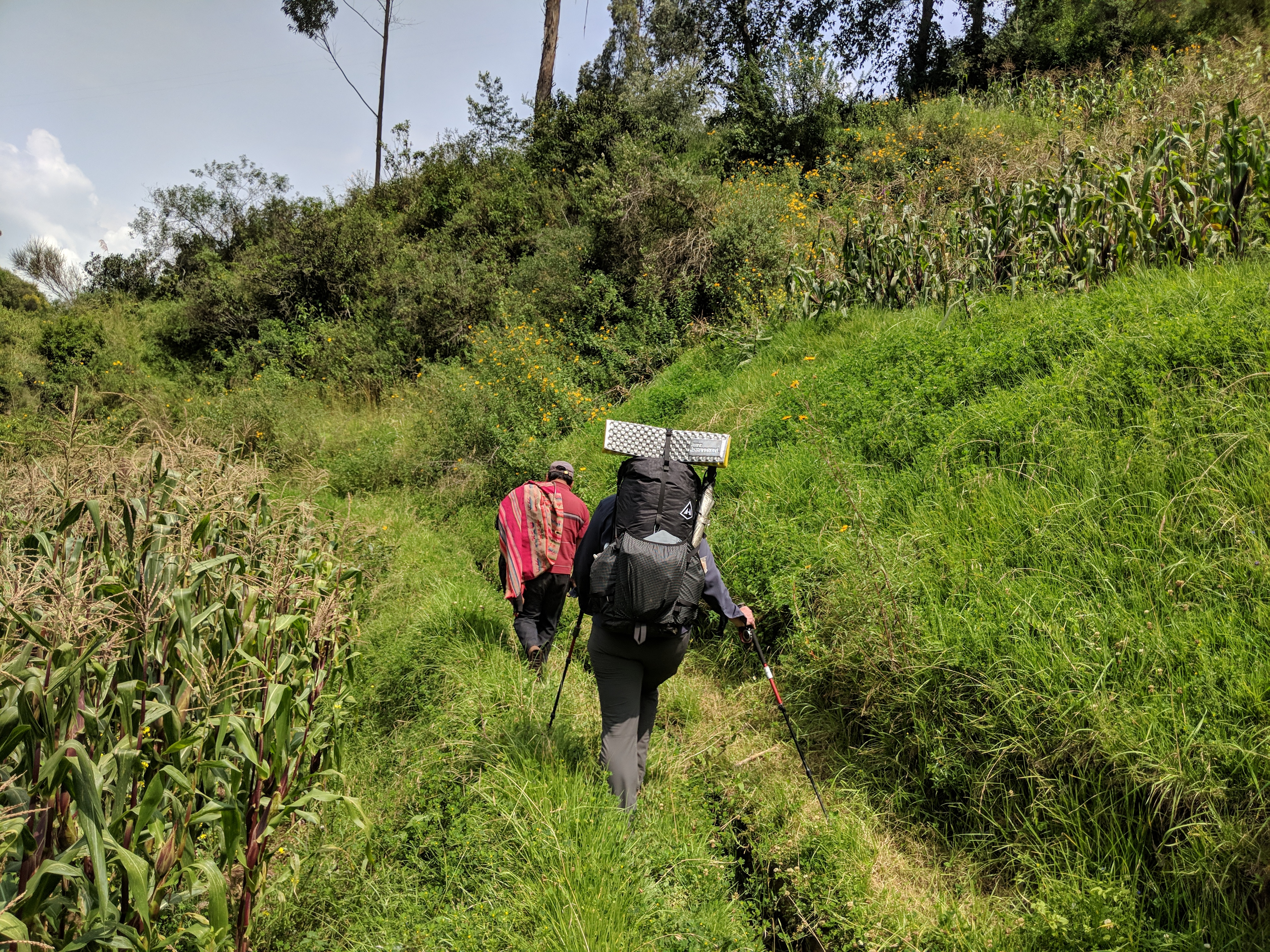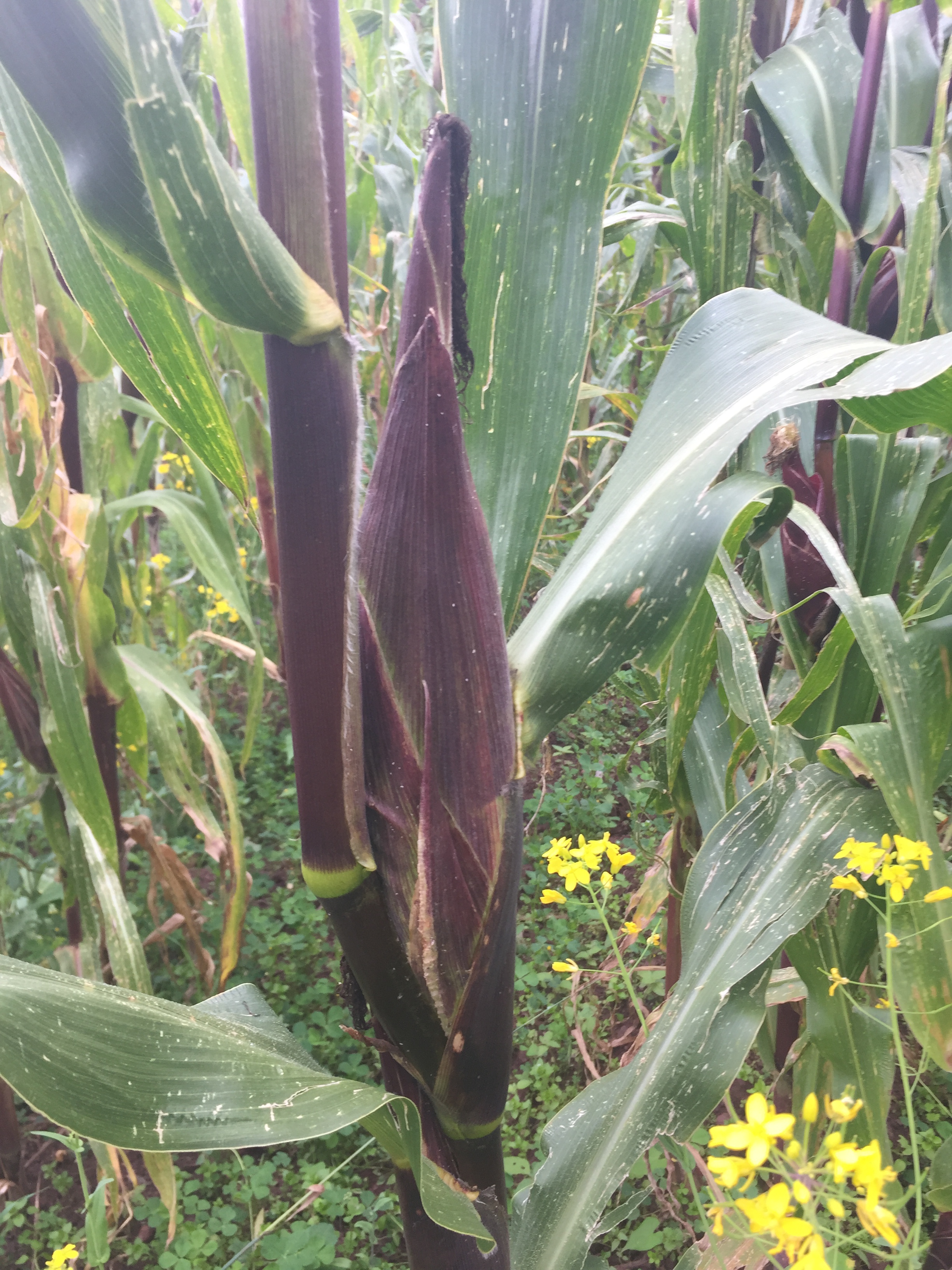Written by Fidgit
Climbing out of Andahuaylas, we diverted onto a stone aqueduct. We like the aqueducts; they follow a gentle grade. Following the narrow trail alongside the stone embankments overlooking the valley, the city inched further to our backs. A man dropped down from one of the many feeder tails. The colorful blanket and a sickle curved over his shoulder.

He walked along ahead of us when, abruptly, at a turn in the hillside, he whipped the crescent blade from his shoulder,stooped, and struck at the wall of the aqueduct. The body of snake fell from the shrubs into the shallow pool of water, writhing and curling.
He dropped the blanket-pack from his shoulder and chopped a long branch of the thorny shrub, scraping down the sides with his sickle but leaving thorns. With this he scooped the snake out of the water, laid it across the trail and began whacking the still writhing body, the heavy thump of the barbed lash hitting hard and flat across the ground.
I look back at Neon. We smile/grimaced awkwardly at one another. These are those moments. Those unexpected, uncertain, moments.
He scooped up the snake’s now thoroughly dead body, probably some 18-24 inches long, and draped it over a stump to the side of the trail. His business done and us standing a few feet behind him, there wasn’t much to do but address one another. In Spanish:
“Are there many snakes around here?” I ask him.
“After a long rain, like we had last night, many of them come out, to sun themselves,” the farmer explained. He regarded us for the first time.
“Are they venomous?” I hazarded.
“No, they are tame.”
“So . . . why do you kill them?” I press.
“Well,” he stops to think about it for a moment, “a lot of kids wander down here and the snakes scare them.” Seeming satisfied with his reply, he tied his blanket back on, contoured the sickle over his shoulder and we continued on.
This is a polite man. He left us to our own, but now that I engaged in conversation, there is space to chat. I always appreciate these conversations. I feel safe in them.
We pause above a set of fields as he points out the various crops: corn, alfalfa, potatoes, “cosechamos en Mayo,” he answers another of my questions.
“Ah, in my country we harvest around September,” Ever since last year I have stopped feeding the sense of differences between our countries. It happened as we spent time at the end of the season with family and friends. My mother’s high school best friend’s husband, Myron, would watch the fields, the animals, the farm work, and talk about being raised farming in the U.S., raising animals, much like here. Listening to him I was reminded, we are not that different. The TV already emphasizes enough how different life in the US is; we are here to consecrate common ground. We all count on food planted and grown by farmers.

So far, it has been working. There is an immediate interest. They want to know what we grow, whether we work the land by hand or machine, what kinds of animals. I return with the questions. Do they get one or two crops a year (most get one, though in some of the ravine areas people can get two.)
I see them out in their fields, rectangles on their back, sprayer hose, applying pesticides to their crops. Pesticides are new here and they are as enthusiastic about them now as we were when first they came to the U.S. There are so many aspects like that, incongruity between South and North America, things we over-employed for years and now begin to turn the tides against them but which are yet new down here: chemical sprays, single use plastics, fuel consumption. Fertilizer and pesticide shops district is one of the larger areas in Andahuaylas, taking up the width of the city for several blocks.

The farmer is particularly proud of the aqueduct, la sequia he calls it. In a few weeks, all 180 usuarios of the flow of water will come out together and clean it. We come to a deep crook in the hillside where the aqueduct bridges above a river. There are two paths; he explains that they recently built the second one. Having dug fence post holes, worked fence lines, picked burdock, and worked on a ranch, I relate to his pride in this work. He talks about the dry years, and that this year there is water, the crops are coming in well.

“I am turning here to collect firewood,” he turns to us. “You go out around this bend, there will be a small river and a bridge, there you can turn up to the pueblo and then follow the road to Nueva Esperanza. There are many houses there.”
He looks at his hand, turns it over, looks up sheepishly, “I have been working, my hands are dirty,” I thrust mine out and am honored to shake. His is limp in my grasp, they often are but we smile at one another.
Neon and I forge on, to a beautiful lunch spot by a small bridge where an overflow of water falls down the moutainface into the sequia. On the road, just at the edge of the small town, we pass two happy, curious piglets on leads; up the hill a cholita stops working in her corn field to watch us pass; I wave, she waves back. A young mother and her little girl sit amidst the cornstalks, the little girl shouts “hola!”

This is a healthy community. Happy animals, kind humble invested men, friendly women and children. We have passed through many regions much less happy and friendly. This increases the sense of joy of regions such as this.
Two tiny children, maybe 4 or 5, stand by a light pole watching us pass. I remember the empanada I had brought from town. I offer it to the sister as her brother clings to the front of her shirt. 4 round little eyes, I impress upon her that it be shared; not that I need to, children here are very good about sharing amoungst themselves.
These two are shy and do not speak so much, I forget sometimes how imposing our size and foreignness can be. As we turn to walk away, the children scurry along behind us. She speaks to me, but if I turn to look at them directly, they become shy again. Instead I slow my pace and try to watch them from my periphery, glancing back sometimes, she begins to chat, takes a bite of the empanada and expertly splits it in half.
“We are going to help with la cosecha,” she volunteers proudly, “we are going to harvest the corn so we can eat it.” We talk about what meals corn is good for (answer: all of them). The children are becoming shy again, so I bid them adios as they enjoy the empanada, walking down the middle of the road.

I hear them over my shoulder as they turn off the road into the fields breaking into a trot and shouting to their elder about las dos gringas, becoming brave again as the strangers move away.






Comments (4)
Great story. Written VERY well — I felt like I was there. Keep up the storytelling!
I enjoy your travel tales so much….. Thank you!! Great photos as well, it’s been fun following your journey.
I am glad you liked it. The feedback is helpful, I will try to do more photo-heavy posts when internet connectivity allows.
I love reading your posts every Sunday, I look forward to my Sunday reading where you gals are and where your journey is taking you. It’s quite amazing what you are doing and very very interesting to say the least. Be careful and stay healthy.
Donna